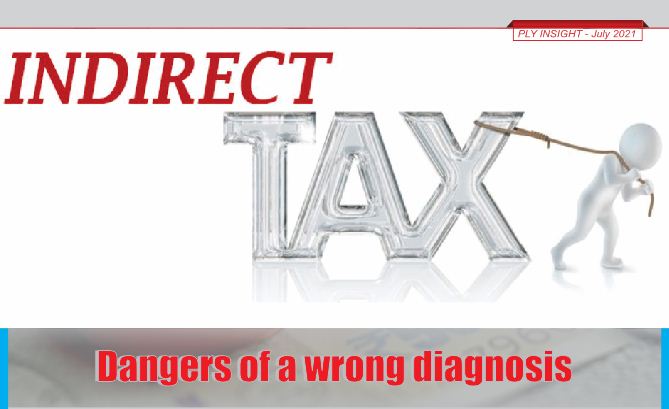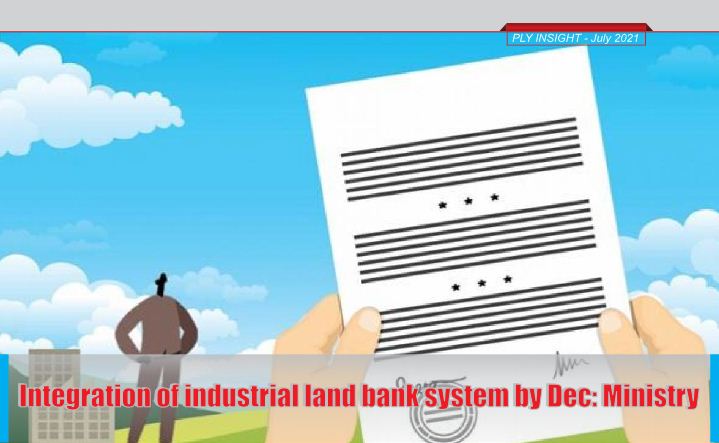
Dangers of a wrong diagnosis
- जुलाई 20, 2021
- 0
Why are tax experts worried?
A preponderance of indirect taxes in the Centre’s GTR is considered regressive and inequitable. While the levy of direct taxes is linked to the taxpayer’s income level, the burden of indirect taxes is equally shared by all taxpayers irrespective of their income. For instance, a rich person pays the goods and services tax (GST) on soaps at the same rate as a poor person.
So, tax experts are concerned that the central tax system may become iniquitous once again and the gains secured in the last decade or so may be frittered away. There is, therefore, a demand that indirect tax rates should be reduced to bring down its share in GTR. But before assessing how justified such a demands is, it would be instructive to recall the past trend in the composition of the Centre’s GTR.
Remember that in post-reforms India, the Centre took 17 years to reach a stage where direct tax revenues became more than those from indirect taxes in the overall GTR basket. In 1990-91, the share of direct taxes in GDP was woefully low are 1.94 per cent, while indirect taxes accounted for 8.17 per cent of GDP. Such was the preponderance of indirect taxed then!
The imbalance was addressed at a slow pace in the years that followed. By the end of Manmohan Singh’s five-year tenure as the finance minister in 1995-96, the share of direct taxes in GDP rose to 3 per cent and that of indirect taxes declined tp 7 per cent. Successive finance ministers (P Chidambaram and Yashwant Sinha), irrespective of the ruling parties they represented, maintained the trend of correcting the imbalance through bold and innovative reforms in both direct taxes was that by 2008-09 and for the first time in post-reforms India, direct tax revenues rose to 5.8 per cent of GDP, inching ahead of indirect taxes at 5.18 per cent of GDP.
It’s true that there is a natural tendency to rely more on indirect taxes. Indirect taxes are easier to collect with less scope for leakage. And since, most of the rates are ad valorem; their buoyancy is automatically ensured in keeping with inflation. Moreover, almost two-thirds of the Central cess and surcharges are levied through indirect taxes. Thus, higher collections in indirect taxes allow the Centre to share less tax with the states. Cess and surcharges are not shareable with the states.
But, in spite of that, the real problem lies not with indirect taxes, but with direct taxes.
Thus, those who are complaining about the increase in indirect tax revenues and therefore asking for lower indirect tax rates would be barking up the wrong tree. The Centre would do well to focus more on the way the direct tax rates could be rationalized. The agenda for a revamped direct taxes structure should be not just to phase out exemptions, but also to widen the tax base. Indirect tax reforms should continue, but if India’s tax-to-GDP ratio has to get higher, then the focus should be on restructuring the direct taxes regime to fetch increased revenues for the Centre.
Courtesy: AK Bhattacharya
कर संग्रह: बीमारी की गलत पहचान के खतरे
कर विशेषज्ञों के परेशान होने की वजह क्या है?
असल में केंद्र के जीटीआर में अप्रत्यक्ष करों की प्रमुख स्थिति को प्रतिगामी एवं अनुचित माना जाता है। जहां प्रत्यक्ष करों का शुल्क करदाताओं के आय स्तर से जुड़ा हुआ है, वहीं अप्रत्यक्ष करों का बोझ सभी करदाताओं पर समान रूप से पड़ता है और उनकी आय का भी ध्यान नहीं रखा जाता है। मसलन, एक अमीर आदमी भी साबुन खरीदते समय उतना ही जीएसटी कर देता है जितना एक गरीब आदमी।
लिहाजा कर विशेषज्ञ इस बात को लेकर चिंतित हैं कि केंद्रीय कर प्रणाली फिर से अन्यायपूर्ण हो सकती है और बीते दशक में हासिल लाभ गंवाने की नौबत आ सकती है। ऐसे में परोक्ष कर राजस्व की जीटीआर में हिस्सेदारी कम करने के लिए इसकी कर दरें कम करने की मांग तेज हो सकती है। लेकिन ऐसी मांग पर गौर करने के पहले हमें केंद्र के जीटीआर संयोजन के पिछले रूझान पर भी ध्यान देना होगा।
भारत में सुधार लागू होने के बाद केंद्र को वहां तक पहुंचने में 17 साल लग गए जहां प्रत्यक्ष कर राजस्व ने कुल जीटीआर संग्रह में अप्रत्यक्ष कर को पीछे छोड़ दिया। वर्ष 1990-91 में प्रत्यक्ष करों का जीडीपी में हिस्सा 1.94 फीसदी के चिंताजनक स्पर पर था जबकि अप्रत्यक्ष कर राजस्व जीडीपी कर 8.17 फीसदी था। उस समय अप्रत्यक्ष करों की इनती प्रमुखता हुआ करती थी।
आने वाले वर्षों में इस असंतुलन को धीरे-धीरे कम किया जाता रहा। वित्त मंत्री के तौर पर मनमोहन सिंह का कार्यकाल खत्म होने तक जीडीपी में परोक्ष करों का हिस्सा बढ़कर 3 फीसदी हो चुका था जबकि प्रत्यक्ष कर की हिस्सेदारी घटकर 7 फीसदी पर आ गई थी। उनके बाद वित्त मंत्री बनने वाले पी चिदंबरम एवं यशवंत सिनहा ने भी साहसिक एवं नवोन्मेशी सुधारों से इस असंतुलन को दूर करने का काम जारी रखा। इसका नतीजा यह हुआ कि वर्ष 2008-09 तक प्रत्यक्ष कर राजस्व जीडीपी के 5.8 फीसदी पर जा पहुंचा जो प्रत्यक्ष कर राजस्व (5.18 फीसदी) से ज्यादा था।
यह सच है कि अप्रत्यक्ष करों पर अधिक पारित रहने की एक स्वाभाविक प्रवृत्ति होती है। दरअसल लीकेज की गुंजाइश कम होने से अप्रत्यक्ष करों का संग्रह अधिक आसान होता है। अधिकांश दरें मूल्य- आधारित होने से उनकी अधिकता स्वतः ही मुद्रास्फीति के अनुरूप होती है। इसके साथ ही केंद्र के दो तिहाई उपकर एवं अधिभार अप्रत्यक्ष करों के जरिये ही लगाए जाते हैं। इस तरह अप्रत्यक्ष करों का अधिक संग्रह होने से केंद्र को राज्यों के साथ कम कर बांटने की रियायत मिल जाती है। असल में उपकर एवं अधिभार राज्यों के साथ नहीं बांटे जाते हैं। बहरहाल असल समस्या अप्रत्यक्ष करों के साथ न होकर प्रत्यक्ष करों में है।
इस तरह अप्रत्यक्ष कर राजस्व में वृद्धि की शिकायत कर रहे और इन कर दरों में कटौती की मांग उठा रहे लोग गलत निशाना लगा रहे हैं। केंद्र प्रत्यक्ष कर की दरों को तर्कसंगत बनाने पर कहीं अधिक ध्यान दे सकता है। प्रत्यक्ष कर ढांचे में संशोधन का एजेंडा सिर्फ रियायतों को चरणबद्ध तरीके से हटाना न होकर कर-आधार का दायरा बढ़ाना भी होना चाहिए। अगर भारत का कर जीडीपी अनुपात बढ़ाना है तो जवाब प्रत्यक्ष कर प्रणाली के पुनर्गठन में निहित है ताकि केंद्र को अधिक राजस्व मिल सके। भारत जैसे देश में जहां प्रति व्यक्ति आय 1.5 लाख रुपये से भी कम है वहां कई रियायतों के जरिये 5 लाख रुपये तक की आयत को कर मुक्त नहीं रखा जा सकता है। ऐसे में क्या फिर से 3.5 लाख रुपये तक की आय को कर-मुक्त करने के बारे में सोचना होगा?































































